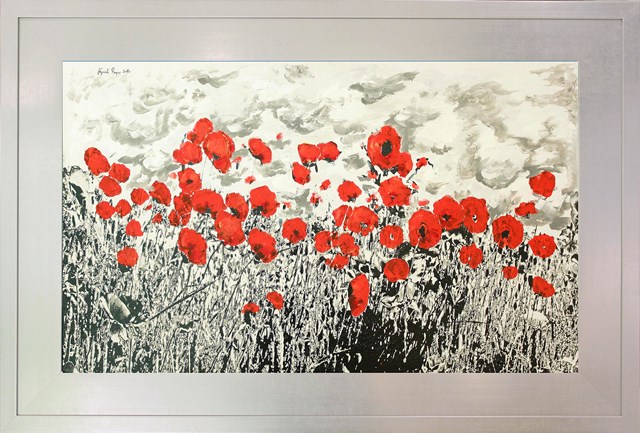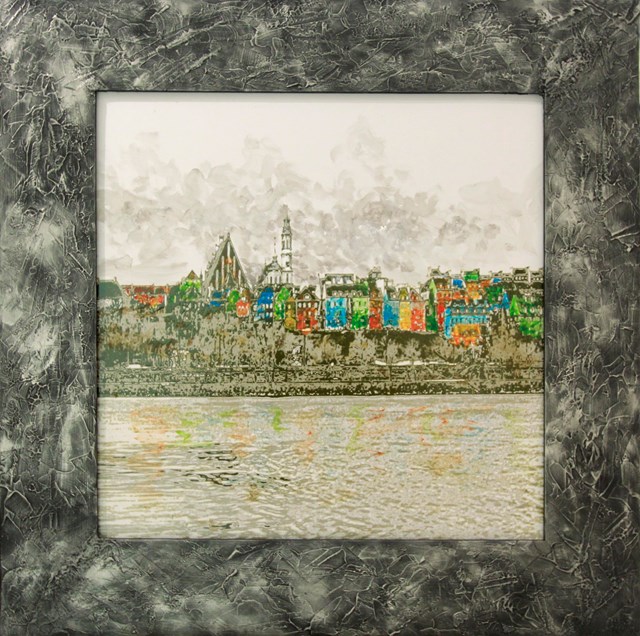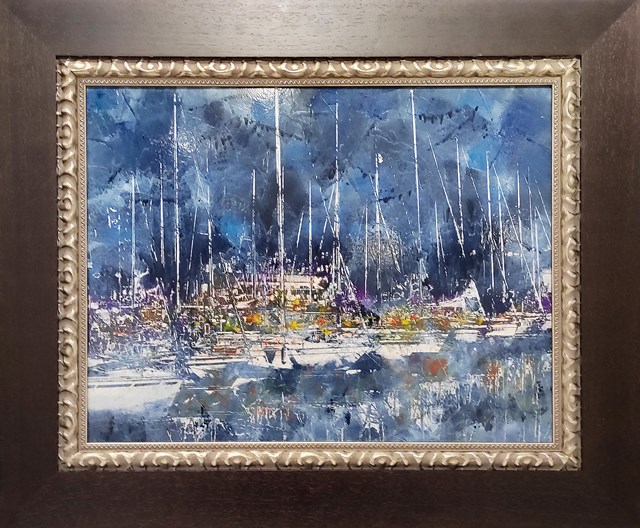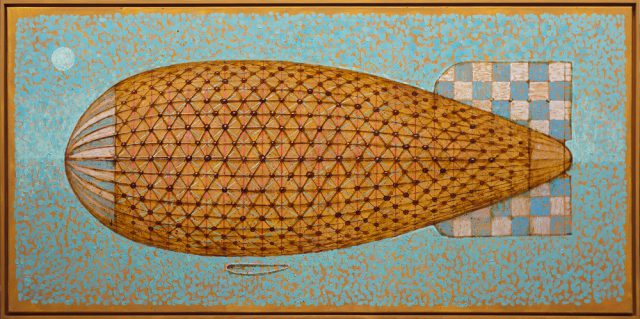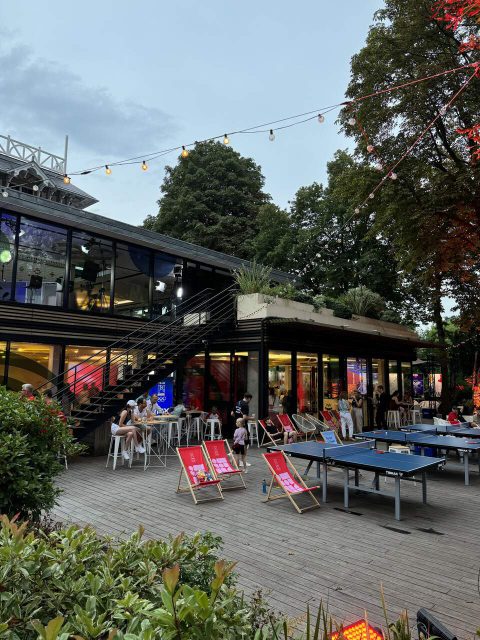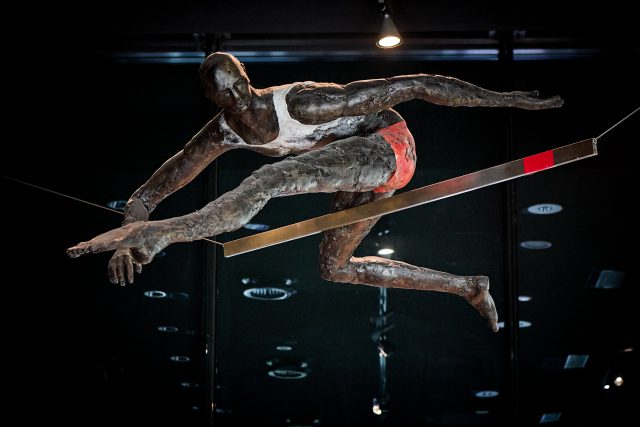“The passion for algraphy was an internal impulse over which I had...
Algraphy is an unusual graphic technique that was created at the end of the 19th century, apparently a bit by accident. As the only graphic method, it enables the display of the graphic matrix as an image, not only prints made on a graphic press. Such an image can be made one-time – unique.
Today algraphy has been almost completely forgotten. In Poland, it is brought back to life by Wojciech Rogosz – a graphic artist, photographer, painter, member of the Association of Polish Artists – Polish Applied Art. The artist is a graduate of the Faculty of Photography and Image Information at the University of Warsaw (including a year of classes at the Academy of Fine Arts in Warsaw in Prof. Roman Owidzki’s studio), a scholarship holder of the Ministry of Culture and National Heritage (2020), and a beneficiary of the National Center for Culture and Ministry of Culture and National Heritage program. – Culture on the Web (2020). He has been passionate about photography and graphics since he was a child, taking his first lessons from family professionals: his grandfather, father and uncle.
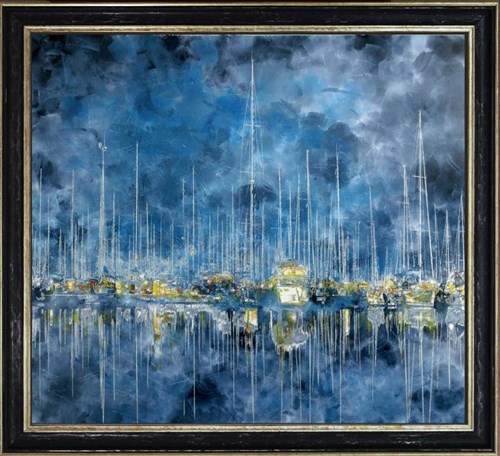
Wojciech Rogosz, Night in the harbour – painting made using the algraphy technique is in the catalog of the January 47th Auction of New Art at Art in House.
As Wojciech Rogosz says, the algraphy technique gives enormous possibilities, and with a little systematic and self-denial, it can be mastered relatively quickly. On the other hand, the possibilities of algraphy in terms of building form and color are much greater than any other graphic technique.
The artist goes on to say that his monochrome works: architecture and landscapes, are closest to classical works in the technique of algraphy. Color algorithms, or those with a slight addition of color, are a different world.
– In classic graphics, colors are layered. One color is applied to the other after the previous one has dried. In my work, I put a few colors on dry monochrome graphics using the method of oil, acrylic or watercolor painting (depending on the material on which I work). Another type of color algraphy is graphics on a metal plate, where I put several colors on top of each other using the “wet on wet” method. This is my original method that I have been perfecting for several years. I made the oil graphic “Night at Port” with it, which will be put on the January auction at the Art in House Auction House (47th New Art Auction, which will take place on January 15, 2021). The end result looks more like oil painting than graphics – says Wojciech Rogosz.
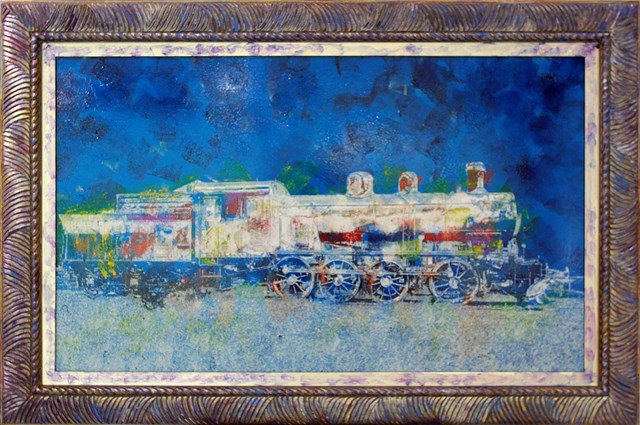
When was algraphy invented?
– Algraphy was founded at the end of the 19th century. A bit by accident. In order to understand the essence of algraphy, one has to go back to the sources of lithography, which was the dominant graphic (read reproductive) technique on the market at that time. The material from which graphic matrices in this technique have been made and made to this day is lithographic stone. A specific, rare, natural fossil stone. There are only two mines of this stone in the world: one in Germany and the other in Poland. Already in the aforementioned 19th century it was known that the lithographic stone deposits were running out. Given the enormous demand for lithographic prints to be used as illustrations for books, posters, labels, etc., the society of that time faced the halt of this type of production. The search for other reproductive methods as well as a substitute material for the lithographic stone began. Freshly invented aluminum turned out to be such a material. Yes, it’s amazing, but the surface of a lithographic stone has the same physical properties as the surface of an aluminum plate. The first lithographs made on an aluminum plate gave rise to a new technique: algraphy – says the artist.
When did it happen?
– It is conventionally assumed that this method was first used by Josef Scholz from Mainz in 1892. From that moment on, the development of algraphy has been very rapid. It takes over the lithography “market” and becomes the most popular graphic technique at the beginning of the 20th century. And today it is one of the least known graphic techniques.
Why do you think algraphy is forgotten?
– This is a frequently asked question. I think one of the reasons is the technical aspect. Today’s metal sheets do not forgive mistakes, and errors in the process of creating a matrix are usually irremovable, the matrix itself then goes to the basket. The second thing is that this technique is no longer taught at art academies and there are no workshops. And in the 60s and 70s of the last century it was composed of prof. Roman Artymowski and prof. Waldemar Świerzy. When I exhibited my first algraphs at the Warsaw Art Fair in 2005, I caused quite a stir on the market. Almost all galleries and auction houses exhibiting there did not know what algraphy is at all. As I remember correctly, only the Ochalscy family from Okna Sztuki Gallery (formerly Unicum) knew this technique. As they claimed, they had Wyspiański’s works signed as algraphy. Also, by reactivating algraphy, I involuntarily became an animator of the return of algraphy on the Polish art scene.
Where did you come up with the idea to bring this forgotten technique back to life?
– In the nineties of the last century I worked in the Monuments Conservation Studios in Warsaw. There, for the first time, I saw algae made on a tin plate. These works caused quite a stir among colleagues, due to their “unknown” origin and the unknown technique in which they were made. After many years, when I was already working as an “independent economic entity”, the topic came back to me like a boomerang, it did not give me peace. I thought about how to go about this technique. It was such a strong inner impulse that I had no control over. He even persecuted me. I began to browse all possible sources. It took quite a long time to prepare myself for the first painting on an aluminum plate. The effect was, of course, worse than bad, but for me the most important thing was the experience gained and the 30 percent of the correct part of the graphics made. There is only 70 percent room for improvement.
And how was it next?
– Through trial and error, I have mastered the technique to such an extent that I have correctly performed a dozen or so algraphy. It is worth noting that the historical descriptions of this technique do not match modern paints and adjunct chemicals. I had to develop the whole process from scratch. Today’s paints are manufactured using different technologies than those from the 19th century. In short, I had to modify modern paints in order to obtain better and better results. My friends helped me a lot in my experience. Among others, employees of the Faculty of Graphics of the Warsaw Academy of Fine Arts became interested in my activities. Thanks to the favor of the then dean of this faculty, prof. Rafał Strent and the spirit of the department of Janek Lewy, I have refined the system of reflecting graphics on the graphic press. As a result, I mastered the technique to the maximum.
Why did algraphy fascinate you so much?
– I don’t know, I think it was my Guardian Angel who beat me with some heavenly stick. I was overwhelmed by an incomprehensible passion for something completely unknown. I spent a gigantic amount of time, material (i.e. money) on experiments that seemed to be mere whims. The more trials and experiments I did, the more I got soaked with the subject. First, I wanted to make a painting in a unique, little-known technique. I did not think about long-term goals, I wanted to master a technique that was unfamiliar to me. Then I made a dozen or so graphics (which I prefer not to talk about much) and presented them at a small exhibition (invited by Krzysztof Jarocki’s kind friend) in the exclusive Galeria Mokotów Shopping Center. After the two-day exhibition, I lost my voice. There were so many questions and conversations that the end result was inflammation of the vocal cords. The interest in my graphics has exceeded all possible limits of my imagination. It was one of those signals in my life that showed me that what I started to do had some deeper meaning – he says.
Wojciech Rogosz spends a lot of time on further experiments with algraphy. Currently, he is working intensively on multi-color algraphies on a metal (aluminum) plate. In this installment, he applies oil paints using the “wet on wet” method, creating interesting effects of penetration of several layers.
As the artist says, very different clients are interested in his works: from young people to large companies and ministries.
– At the exhibitions and in my gallery, I closely observe the reactions of the viewers. I do not know the key that can identify and characterize those who like my work, because the spectrum of such people is very wide: from young people to middle-aged and seniors. I think that the reception of art depends on the sensitivity of the viewers and their artistic preferences. My works are bought by all possible companies (legal and architectural offices, banks, ministries) as well as private persons – incl. for over a dozen years my works are given as the so-called welcome and farewell gifts by the diplomatic corps of the Polish Ministry of Foreign Affairs – says the artist.
We invite you to visit Wojciech Rogosz’s gallery at Art in House


